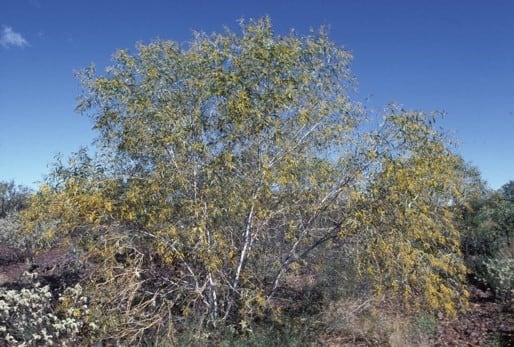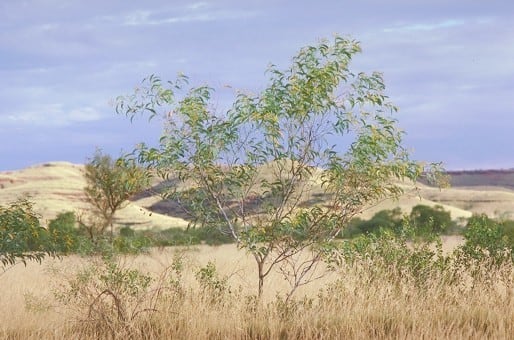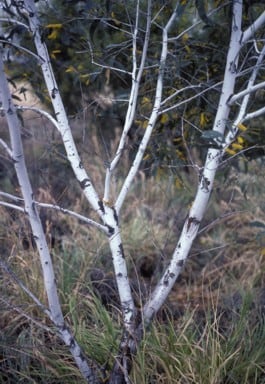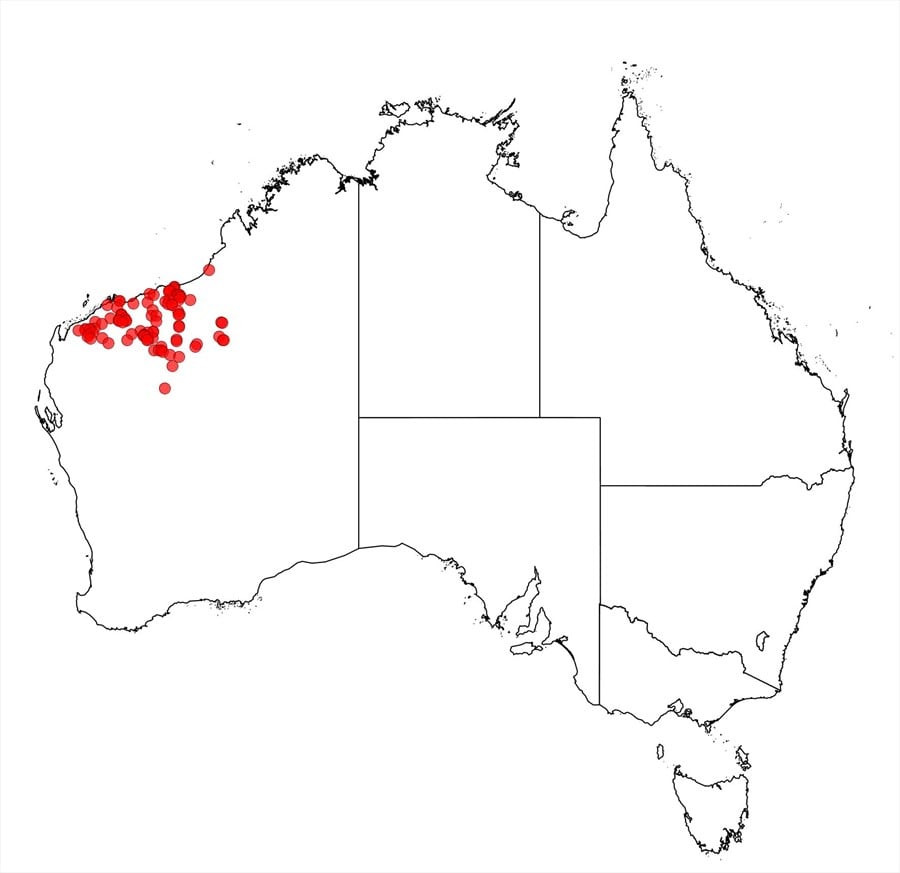Acacia tumida var. pilbarensis M.W.McDonald
WATTLE
Acacias of Australia
Common Name
Pilbara Pindan Wattle, Silver-leaf Wattle, for Aboriginal names see B.R.Maslin et al., Wattles of the Pilbara CD-ROM (2010)
Family
Fabaceae
Distribution
Mostly confined to the Pilbara region in north-western W.A with scattered occurrences in the Little and Great Sandy deserts in the vicinity of Telfer.
Description
Shrub or shapely tree mostly 2–6 m high, single- or multi-stemmed, canopy openly branched. Bark normally smooth and pruinose on adolescent plants and upper branches of mature plants, becoming fissured, fibrous and grey on main trunks of mature plants. Branchlets normally pruinose. Adult phyllodes falcate to subfalcate, (8–) 10–15 cm long, 8–22 mm wide, non-pruinose or lightly pruinose, green to subglaucous or (especially on young plants) glaucous. Peduncles (3–) 4–10 (–12) mm long; spikes normally 2–4 cm long. Pods (5–) 6–10 (–12) mm wide. Seeds 5–7 mm long, 3–5 mm wide.
Phenology
Flowers Apr.–Sept. with main flush late May–July.
Habitat
Grows mainly in open woodlands often along seasonal creeks and drainage lines in neutral to alkaline sand (pH 6–7) or clay loam (pH 8–9) on plains or in rocky hills.
Specimens
W.A.: 37 km from Port Hedland turnoff on Roy Hill–Meekatharra rd, A.M.Ashby 4190 (AD, MEL, PERTH); Telfer mining centre, E.M.Goble-Garratt EMG 41 (PERTH); 88 km NW of Newman on rd to Juna Downs, B.R.Maslin 4618 (BRI, CANB, PERTH).
Notes
This variety is fire-sensitive and does not coppice following fire, fide M.W.McDonald, Australian Systematic Botany 16(2): 163 (2003). It is used extensive in the mine site rehabilitation industry in the Pilbara and elsewhere in northern Australia; also by Aboriginal peoples of the central and western Pilbara as a food and for weapons, see B.R.Maslin et al., Wattles of the Pilbara CD-ROM (2010) for details.
This variety was included within the concept of A. tumida var. tumida by M.W.McDonald and B.R.Maslin in B.R.Maslin (coordinator), WATTLE Acacias of Australia CD-ROM (2001). The two varieties are closely related, fide M.W.McDonald, Australian Systematic Botany 16(2): 143, 162 (2003), for details.
Superficially similar to A. hamersleyensis which has non-racemose and hairy pods. Occasionally putatively hybridizes with A. eriopoda (see A. eriopoda × tumida var. pilbarensis), A. monticola (see A. monticola × tumida var. pilbarensis) and A. trachycarpa (see A. trachycarpa × tumida var. pilbarensis), and possibly A. citrinoviridis (see A. citrinoviridis × tumida var. pilbarensis).
Phyllodes on juvenile and adolescent plants are straight and dimidiate and are broader (to 40 mm wide) than those on mature adults; seedling phyllodes have dense, spreading hairs which are lost by the time plants reach adolescence (at about 6–12 months of age).
FOA Reference
Data derived from Flora of Australia Volumes 11A (2001), 11B (2001) and 12 (1998), products of ABRS, ©Commonwealth of Australia
Author
B.R.Maslin
This identification key and fact sheets are available as a mobile application:
URL: https://apps.lucidcentral.org/wattle/
© Copyright 2018. All rights reserved.














